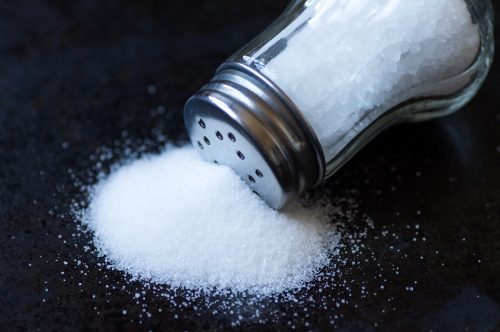It was the Shorei and Shorin classification of styles (ryu) that Funakoshi followed. He characterized them as follows. Funakoshi said that "Shorei-ryu is suitable for people of large build, whereas Shorin-ryu is suitable for those of smaller frames, less physically powerful or thin, like a willow. For basic posture, Shorei- ryu is good, but it lacks the speed necessary for a real confrontation. Shorin-ryu is quick, but if the practitioner is grabbed, they will be unable to move. Therefore, for those who aspire to practice karate, it is important to pick up the good points of each." (Funakoshi 1922, pp. 5-6)
This specific classification, i.e. dividing Shorin-ryu and Shorei-ryu by the body types of the practitioners, can be traced as far back as 1914, when Funakoshi penned an article on karate for the Ryukyu Shinpo newspaper, based on the lectures of his main teacher Anko Asato, and writing under his pen name Shoto. While it is true that Funakoshi's other main teacher Anko Itosu, had also stated that there were two "styles" of karate, Shorin-ryu and Shorei-ryu, in his 1908 letter addressed to the Ministry of Education and the Ministry of War, he never characterized them as relating to body types. The famous Okinawan Bubishi also mentions Shorinji-ryu and Shoreiji-ryu (see, for example, Mabuni, 1934), but again, does not state the differences between the two.
Indeed, other prominent teachers of the day also took exception to Funakoshi's classification. In 1930, Chojun Miyagi was quoted as saying that the breakdown of Shorin-ryu and Shorei-ryu into kata for differing body types, as Funakoshi did, was unfounded (Miki, et al, 1930). Miyagi also went on to say basically the same thing in his 1934 essay Karatedo Gaisetsu (McCarthy, 1999). At the 1936 "meeting of the masters," he said that the only real difference between Shorin-ryu and Shorei-ryu lay in their teaching methods (ibid.).
Later, Mabuni Kenwa and his co-author Nakasone Genwa, in their 1938 publication "Kobo Kenpo Karatedo Nyumon," also disagreed with Funakoshi's categorizations.
The main thrust of the Mabuni/Nakasone argument is that if this is indeed a valid classification system, then why did Funakoshi change the classifications of certain kata, namely Wanshu (Shorei-ryu to Shorin-ryu), Chinto (Shorei-ryu to Shorin-ryu) and Jitte (Shorei-ryu to Shorin-ryu, than back to Shorei-ryu)?
They also argue that following Funakoshi's classification method, Chojun Miyagi's (founder of Goju karate) brainchild Tensho would clearly belong to the Shorei-ryu. However, as Mabuni (founder of Shito-Ryu karate) and Nakasone (a famous Tomari/Matsumura karate-ka) state, Tensho was based on the chapter entitled Rokkishu (showing six open hand positions with some description of their application) in the Bubishi (a once secret text on White Crane and Monk Fist kung fu hand copied and passed among many early Oknawan karate masters), and it is clearly stated within that Rokkishu belongs to the Shorin(ji)ryu (Mabuni et al, 1938).


